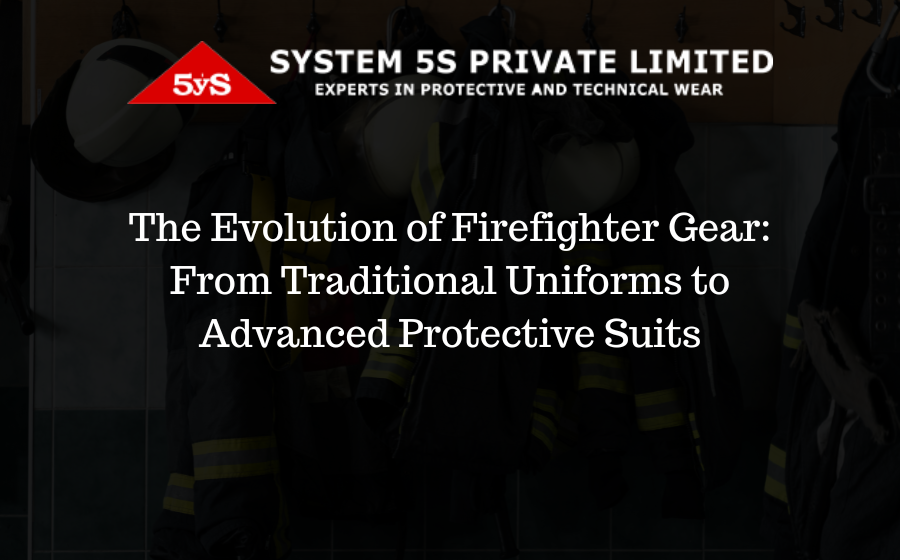
Firefighting is one of the most dangerous professions, requiring individuals to face extreme heat, flames, and hazardous environments. The evolution of firefighter gear over the years reflects the growing understanding of these risks and the advancements in technology and materials that have been developed to protect those who serve on the front lines. In this blog, we will explore the history of firefighter protective gear, highlight the technological improvements in modern suits, and discuss how these changes have enhanced safety and efficiency for firefighters.
A Brief History of Firefighter Gear
Early Firefighting Uniforms: In the early days of firefighting, protective gear was rudimentary at best. Firefighters wore woolen uniforms and leather helmets, which provided minimal protection against heat and flames. The primary purpose of these uniforms was to offer some degree of protection from falling debris and to keep firefighters warm in cold weather.
The Introduction of Rubber and Canvas: By the late 19th and early 20th centuries, firefighting gear saw significant improvements with the introduction of rubber and canvas materials. Rubberized coats and boots became common, offering better water resistance and some protection from heat. These materials, however, were still far from ideal, as they could become heavy and cumbersome when wet.
The Development of Turnout Gear: The mid-20th century marked a turning point in the evolution of firefighter gear with the development of turnout gear. This new type of protective clothing was designed to be worn over regular uniforms and consisted of multiple layers to provide better protection against heat and flames. The outer shell was typically made of flame-resistant materials, while the inner layers included moisture barriers and thermal liners.
Technological Advancements in Modern Firefighter Suits
Introduction of Advanced Fabrics: Modern firefighter suits are a testament to the advancements in material science. Fabrics like Nomex® and Kevlar® have revolutionized the industry by offering superior flame resistance, durability, and strength. Nomex®, an inherently flame-resistant material, does not melt or drip when exposed to fire. Kevlar®, known for its high tensile strength, adds an extra layer of protection against cuts and abrasions.
Multi-Layered Protection: Today’s firefighter suits consist of three primary layers, each serving a specific purpose:
Enhanced Visibility: Reflective strips and high-visibility colors have become standard features in modern firefighter suits. These elements improve visibility in low-light conditions, making it easier for firefighters to locate each other and navigate through smoke-filled environments.
Breathability and Comfort: Advancements in fabric technology have also improved the breathability and comfort of firefighter suits. Lightweight materials and ergonomic designs allow for greater mobility and reduce the risk of heat stress, enabling firefighters to perform their duties more effectively.
Impact on Safety and Efficiency
Increased Protection: The combination of advanced materials and multi-layered construction provides firefighters with unparalleled protection against the dangers they face on the job. Modern suits are designed to withstand extreme temperatures and harsh conditions, significantly reducing the risk of burns and other injuries.
Improved Mobility: The incorporation of ergonomic designs and lightweight materials has enhanced the mobility of firefighters, allowing them to move more freely and perform their tasks with greater efficiency. This is particularly important in rescue operations, where speed and agility can make a critical difference.
Better Health and Well-Being: The improved breathability and moisture management of modern suits help to regulate body temperature and reduce heat stress. This contributes to the overall health and well-being of firefighters, enabling them to work longer and more comfortably in challenging environments.
Increased Visibility and Communication: High-visibility elements and reflective strips improve the safety of firefighters by making them more visible to their teammates and reducing the risk of accidents. Enhanced communication through integrated radio pockets and other features also ensures that firefighters can stay in constant contact with their team and command center.
Conclusion
The evolution of firefighter gear from traditional uniforms to advanced protective suits reflects the continuous efforts to improve the safety and efficiency of those who risk their lives to protect others. The advancements in materials and technology have transformed firefighter suits into highly specialized gear designed to withstand the most extreme conditions. As technology continues to evolve, we can expect further innovations that will enhance the protection and performance of firefighter gear, ensuring that our heroes are equipped with the best possible tools to carry out their vital work. At System 5S, we are committed to staying at the forefront of these advancements, providing high-quality, reliable protective gear for firefighters and other professionals in hazardous environments.